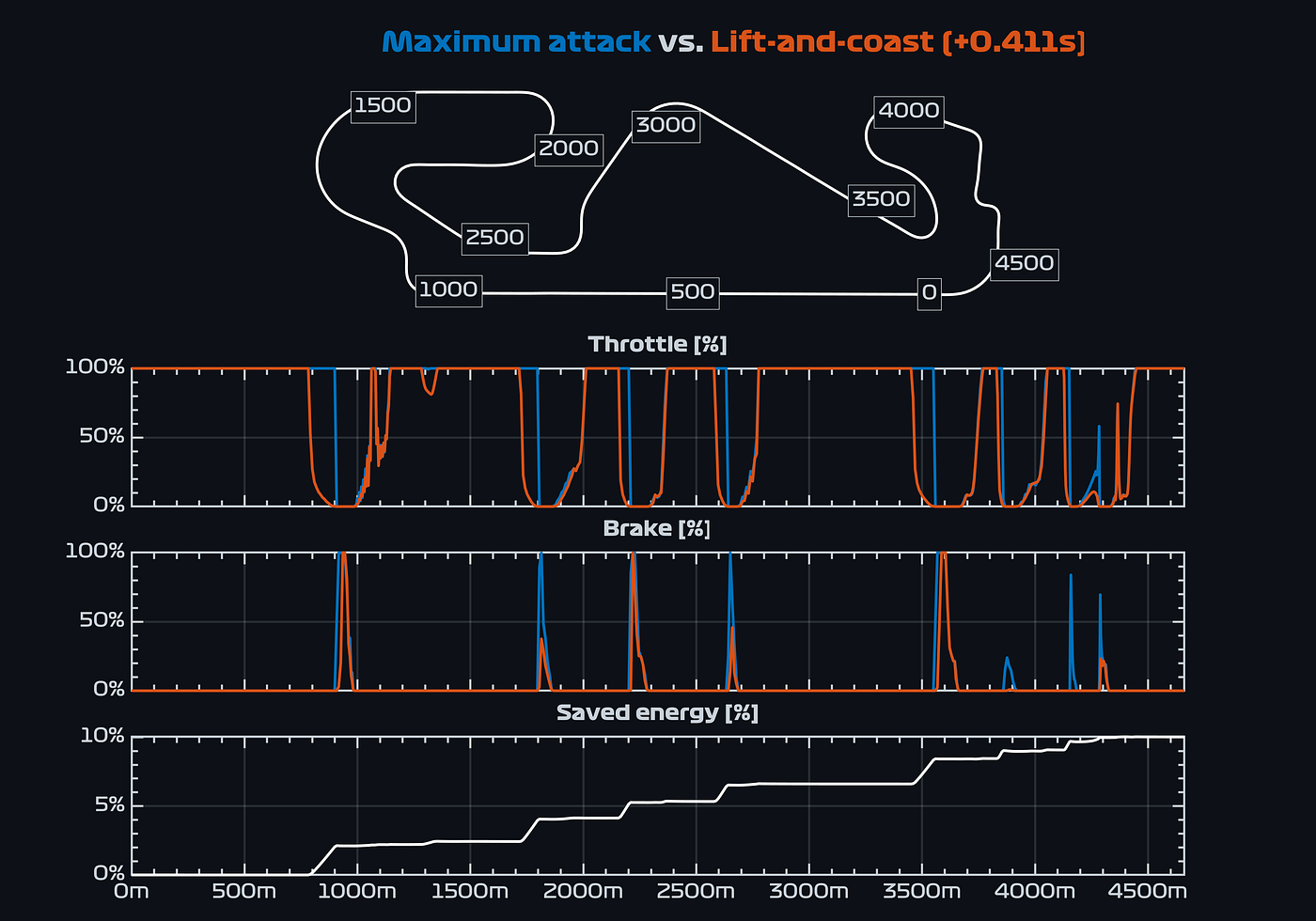How racing drivers save fuel efficiently: the lift-and-coast technique
In most motorsport disciplines, fuel management across the race distance is of paramount importance given the strong and restrictive regulations on the powertrains. A few years ago in Formula 1, when the hybrid V6s landed all immature, drivers used to spend a big part of their race saving fuel. We all remember Fernando Alonso’s nightmarish team communications back in the McLaren-Honda days when he was asked to slow down “I don’t want, I don’t want. So I race and then I concentrate on the fuel”.
The question is: how can drivers adapt their driving to save fuel? Probably advanced readers know that the most successful technique is called lift-and-coast. It’s so called as drivers lift the throttle earlier before a heavy braking section, let the engine brake and aerodynamic drag take over for a few hundred meters, and then if needed mildly apply the brakes to coast into the corner. (Other fuel saving methods include short-shifting, left out of the scope of this post.)
Let’s analyse in depth how this technique works. We show the throttle and brake used to save 10% fuel. The maximum attack (qualifying lap) throttle is shown in blue, whereas the lift-and-coast is colored in orange. The track Circuit de Catalunya, located in Spain, is used for this example.

We have three plots: throttle (check how the orange curve systematically backs off to zero some meters before the blue!), brake, and saved energy. All three are represented against the meters traveled by the car. The track map should help to relate distance and the corners in the track.
Overall, the driver loses +0.411s. This means, that to save fuel for an entire extra lap, the driver will lose +4.110s.
… continue reading in medium